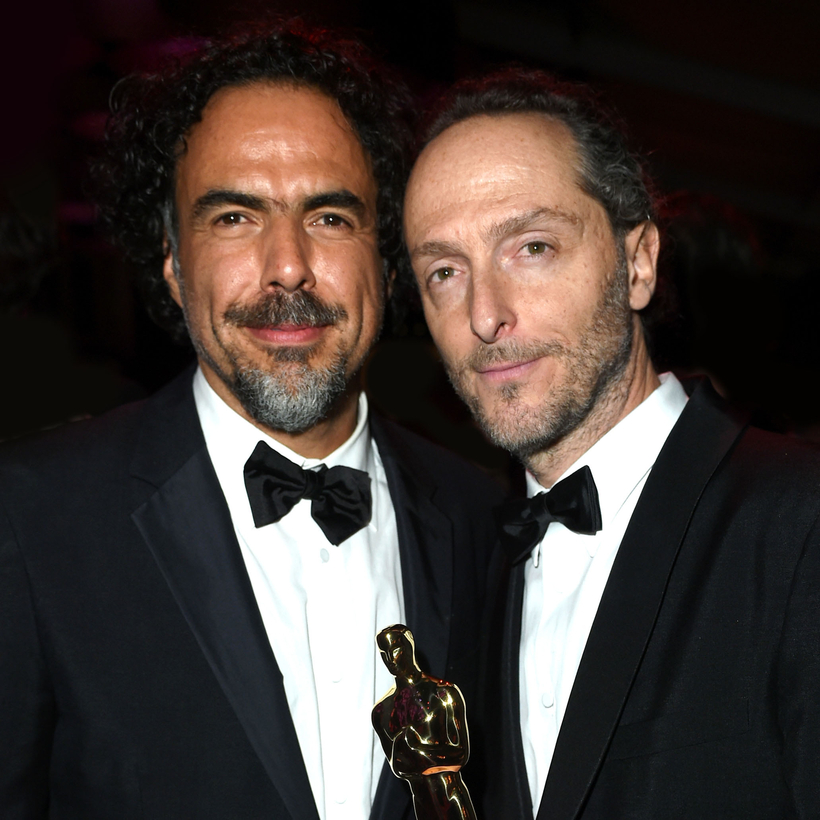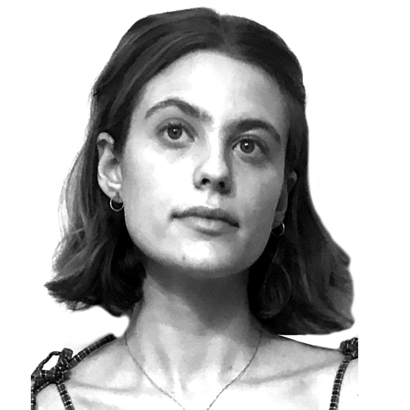“My tongue is divided into two / a border patrol runs through the middle,” writes the El Salvadoran poet Quiqué Aviles, in a poem about immigrating to America. The physical dangers of crossing borders and the psychological fissioning required to do it are the subject of Carne y Arena (Flesh and Sand), a powerful virtual-reality installation by the Mexican director Alejandro Iñárritu.
Research for the installation began after Iñárritu’s 2006 film, Babel—a thriller that travels between Morocco, Japan, the United States, and Mexico. But as Iñárritu experimented with virtual-reality (V.R.) technology and interviewed Mexican and Central American refugees, his success as a filmmaker continued to mount: in 2015 and 2016, for Birdman and The Revenant, he won back-to-back Oscars for best director. In 2017, Carne y Arena was completed, and it quickly debuted at Cannes, where it was the first V.R. installation to be featured at the festival. That same year, the Academy of Motion Picture Arts and Sciences presented Iñárritu with a special-achievement award—a rare accolade that has been given only 17 times—citing the way Carne y Arena “opened for us new doors of cinematic perception,” then Academy president John Bailey said.

Iñárritu’s “semi-fictional ethnography”—its visuals rendered by the cinematographer Emmanuel Lubezki, Iñárritu’s famed collaborator—requires viewers’ participation: you feel sand beneath your feet; you squint in the glare of ICE agents’ flashlights; you move alongside immigrants, all of whom are played by the men, women, and children whose stories helped build the show.
Carne y Arena has now been reconceived for a North American tour by PHI Studio, and is currently on view at Montreal’s Arsenal Contemporary Art museum. Iñárritu spoke about the medium of virtual reality, the distinction between fact and fiction, and the future of storytelling and film.
CLEMENTINE FORD: What initially drew you to virtual-reality technology?
Alejandro Iñárritu: It’s funny, because we are basically in a perfect V.R. world. We are immersed in our reality with perfect sound and perfect vision. We can see and move 360 degrees, and are able to really navigate our worlds. It’s like a V.R. experience, right? But only when somebody says, “Hey, take a look at that,” do you realize what it means to see all around you, to look to one side and then to the other. And V.R. does that. When we put people in these headsets and with the sound and everything, you become much more aware of what reality can be. When this installation takes place, for instance, it’s dusk, in the desert, and you hear the crickets, and you are much more conscious of how magical this is, even if we experience it every day, every minute of our lives.
C.F.: But V.R. ended up being just one of many immersive components to Carne y Arena. How does the exhibition expand on V.R. to tell this story?
A.I.: I was experimenting by myself and with others, and I immediately realized that V.R. alone would not be enough to immerse the audience, to make it feel real. This is not a video game. The installation is almost like a play, because in the beginning you go into this wide room that is cold, and you are completely by yourself, and you are treated as these people are treated. You are isolated, you are freezing, and you are waiting. And people get mad about that; they get uncomfortable. And then you go to the V.R. experience, where you see these characters that I shot, whose stories the exhibition is based on. And you interact. So, in a way, it’s a theater play, a physical event, a virtual digital event. The V.R. experience is important, but the rest of it is what makes people really get very emotional, what really makes an impact. One element that’s crucial is the sensorial part of the experience. It’s not just what you are seeing but what you are feeling: the breeze on your skin, the sand on your bare feet, the breeze of the helicopter when it passes. You experience it by feeling.

C.F.: What made you want to explore immigration through this particular medium rather than, say, through film?
A.I.: In part because those tactile, sensorial elements, even when they are subtle, make people believe in the body’s experience, not only in their minds. Those feelings cannot be intellectualized. Here, there is no political agenda, no speech, no propaganda, no manipulation of a story for political or economic reasons. And the immigrants I interviewed have been the victims of that. They have been so misinterpreted and used by different political parties for economic or religious reasons. Carne y Arena asks you to simply experience things alongside them—no judgments—and that’s really important for understanding.
C.F.: While reflecting the reality of border crossing is obviously important to this project, there is a sequence in the middle that breaks a bit from a sense of the real. What led to that choice?
A.I.: In my view, it’s one of the most beautiful moments, when I put people in kind of a state of unconsciousness, and there’s images that are really surreal, but very emotional. It’s during the V.R. experience, when the screen—or the experience—goes black. I wanted to submerge audiences in a kind of symbolic moment. Some people went to their knees, some cried, and some people resisted and took off their headsets. It’s very intense, because I’ve planted these seeds of reality, and then we go into fiction. It reminds viewers that they will be safe, but that the people whose lives inspired this experience didn’t have that chance.
C.F.: It seems to me that there may be something more honest, or more real, about revealing your own hand in the creation of this experience.
A.I.: I mean, it’s funny because reality has become fiction. And this fiction is very real. We would have never thought that in the United States kids would be put in cages, separated from their families. You would think that was a B movie from a bad channel, right? But that was the government. That was an order from the president of the United States. That’s fiction, but it’s not. So now the relationship between fiction and reality has crossed borders.

C.F.: V.R. seems to have a kind of poetic resonance with borders in that it transports you to places and spaces you might otherwise not have been able to go to. I was thinking about that in terms of the coronavirus, too. Do you think, in this age of travel restrictions, V.R. will become a more common medium?
A.I.: The artistic possibilities of V.R. are amazing. But the big problem with it, what saddened me about it, is that it’s still expensive. It has been taken up by companies that are about entertaining people with video games. The money in the industry, or the research, is going in the wrong direction. Obviously, there have been great, beautiful pieces, like Laurie Anderson’s Go Where You Look: Falling Off Snow Mountain [co-created by Hsin-Chien Huang], which I saw at Cannes two years ago. It was fantastic. But sometimes the technology is very poor, and the ones that have a little bit of technology, they are really stupid, just killing monsters or killing people, or it’s about soldiers and war. Is this really what we should be doing with this technology?
C.F.: Your criticisms or worries about V.R. sound a lot like concerns about the film industry, how a lot of money is going toward superhero movies and blockbusters. Are you less concerned about the future of film?
A.I.: No, no, no, I’m concerned about the future of film. I think all superhero movies are absolutely politically right-wing. I’ve always hated those films because the values are so reductionist. It’s a dangerous way of thinking. At the same time, it’s a cultural genocide. They kill the possibility that kids might dream just a little higher than of being the good guy or the bad guy.
Carne y Arena is on show at Arsenal Contemporary Art, in Montreal, through July 11
Clementine Ford is an Associate Editor for AIR MAIL

